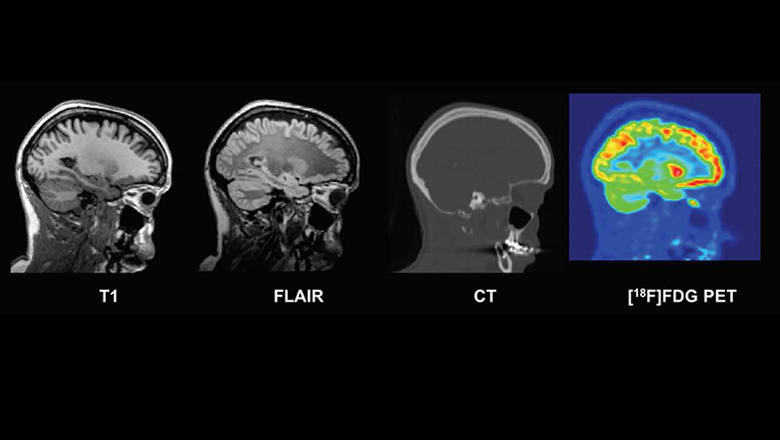Traditionally, every research centre creates its own normal database for its own scanner and for each PET radioligand. However, FDG is by far the most used radioligand, so it makes sense to share. We wanted to lead by example by working with the sponsor, Ethics, and the participants to make the data available to bona fide researchers
Professor Alexander Hammers, Head of PET Centre and one of the senior authors of the study
11 February 2021
New database of healthy adult human brain PET, MRI and CT images is now available for research
A new multi-modal database of healthy adult human brain scans has recently been made available for research.

The acquisition of imaging data can be a costly and logistically difficult process, including gaining participants’ consent for acquiring and disseminating their data. The fact that many countries restrict the use of ionising radiation in healthy controls adds to the complexity of neuroimaging research projects. Imaging database sharing plays a key role in the reduction of research costs and radiation exposure.
The CERMEP-IDB-MRXFDG database , a collaboration between King’s College London & Guy’s and St Thomas’ PET Centre at the School of Biomedical Engineering & Imaging Sciences, CERMEP and Neurodis Foundation Lyon, is a collection of PET, CT, and MR images, which allows for quantitative analyses and methodology development in neuroimaging.
Professor Alexander Hammers, Head of PET Centre and one of the senior authors of the study said: “There are quite a few databases of MR images of the brain, but there is very limited choice for brain PET (FDG) databases, especially for younger adults whom we regularly scan with FDG PET/CT as part of their epilepsy surgery workup. Ours is the first I am aware of which is published with the explicit aim of making it available to others.”
The age range of subjects – between 23 and 65 - is reflective of participants in research studies at imaging centres on conditions such as epilepsy, movement disorders, multiple sclerosis and disorders of consciousness, allowing statistical comparison to a database of healthy controls.
The database is stored in three different formats: DICOM (data not processed), NIFTI (multimodal images coregistered to PET subject space) and NIFTI normalised (images normalised to the Montreal Neurological Institute (MNI) coordinate system), enabling a high level of interoperability.
The database contains PET images, CT data and two different MR sequences, enabling machine learning of the relationship between modalities and the synthesis of missing modalities. A potential future application is in MR-based attenuation correction for simultaneous PET-MR scanners.
Interested researchers can request access to the CERMEP-IDB-MRXFDG database via a short form which can be obtained by contacting the lead author, Dr Inés Mérida.

